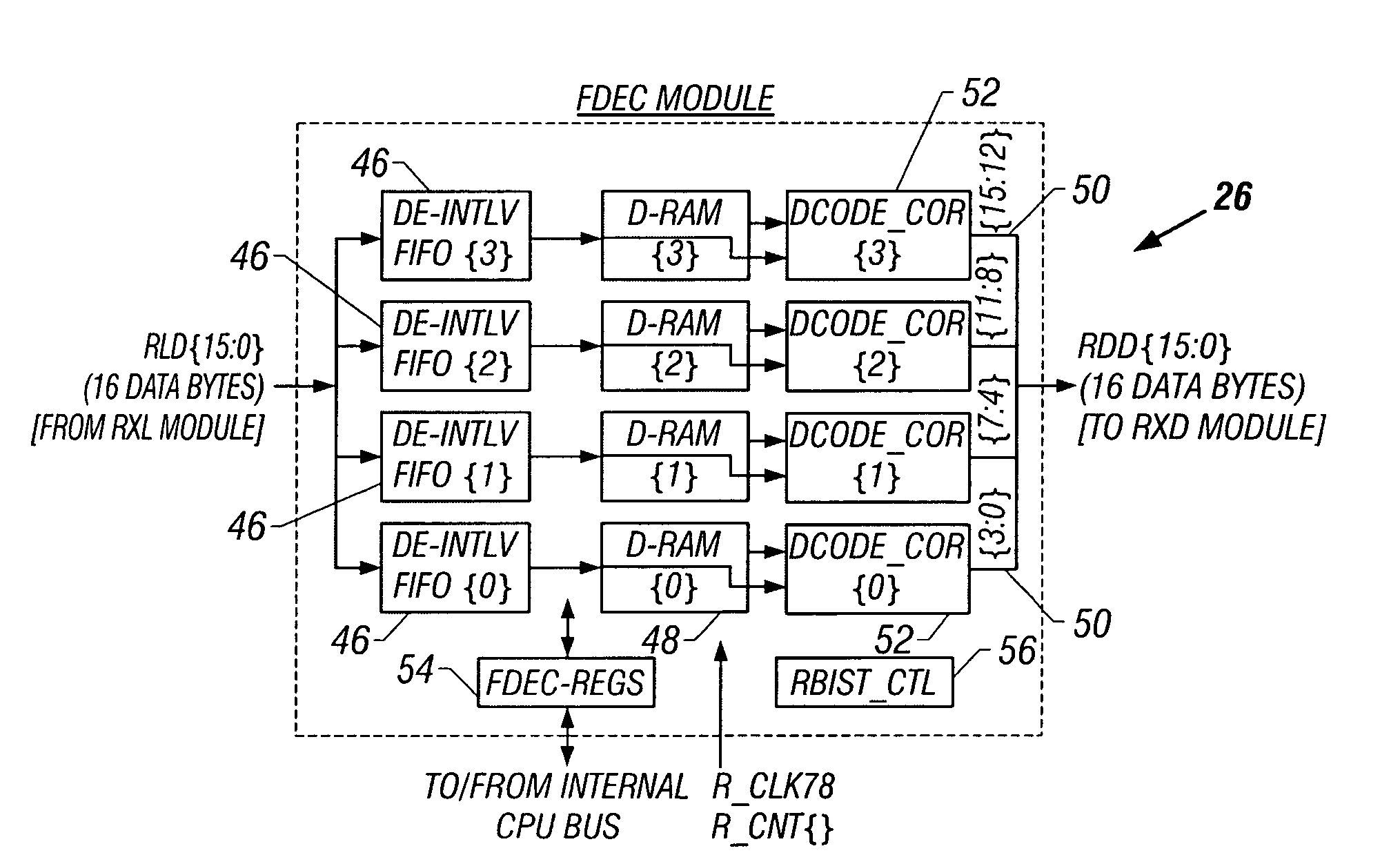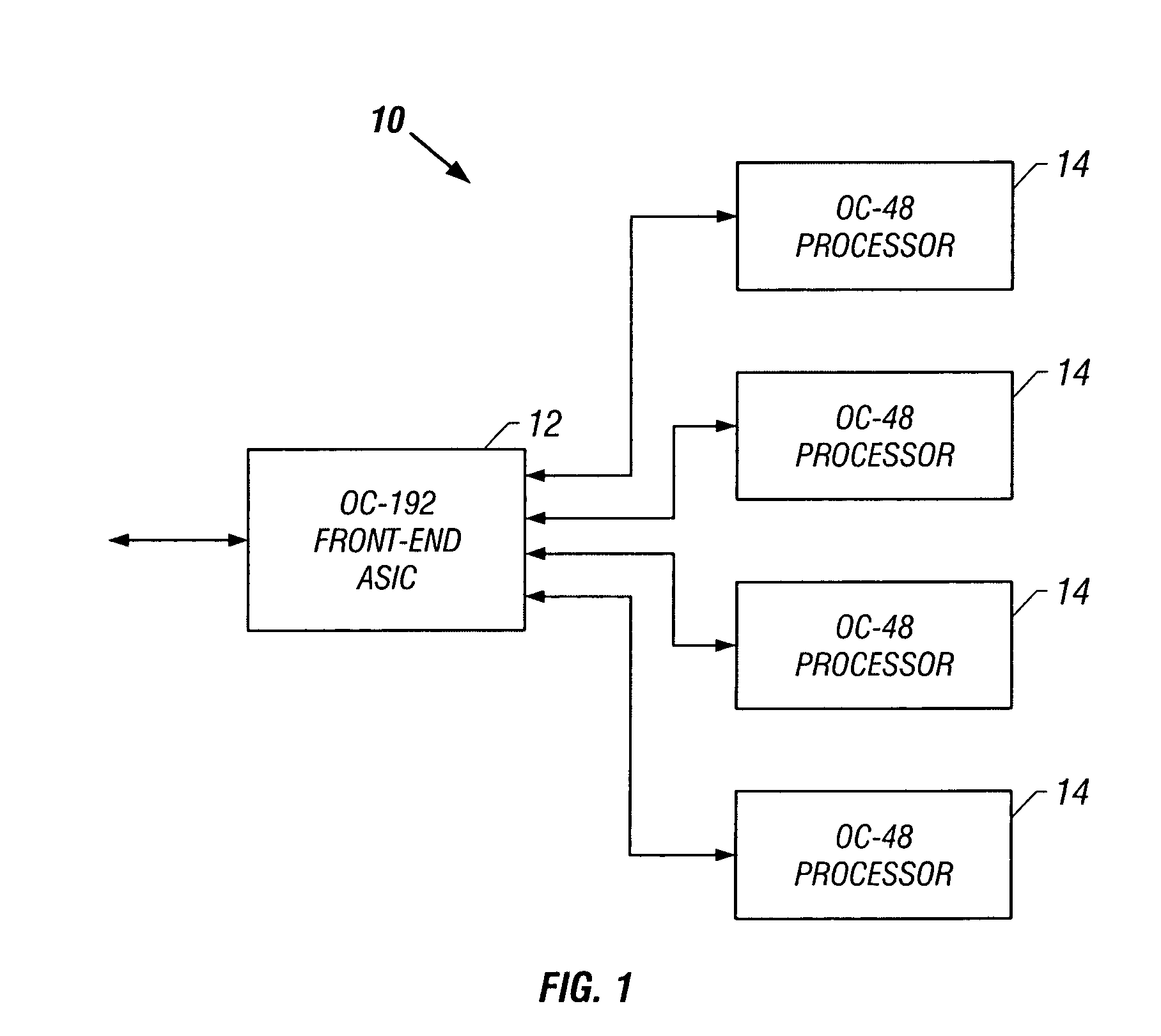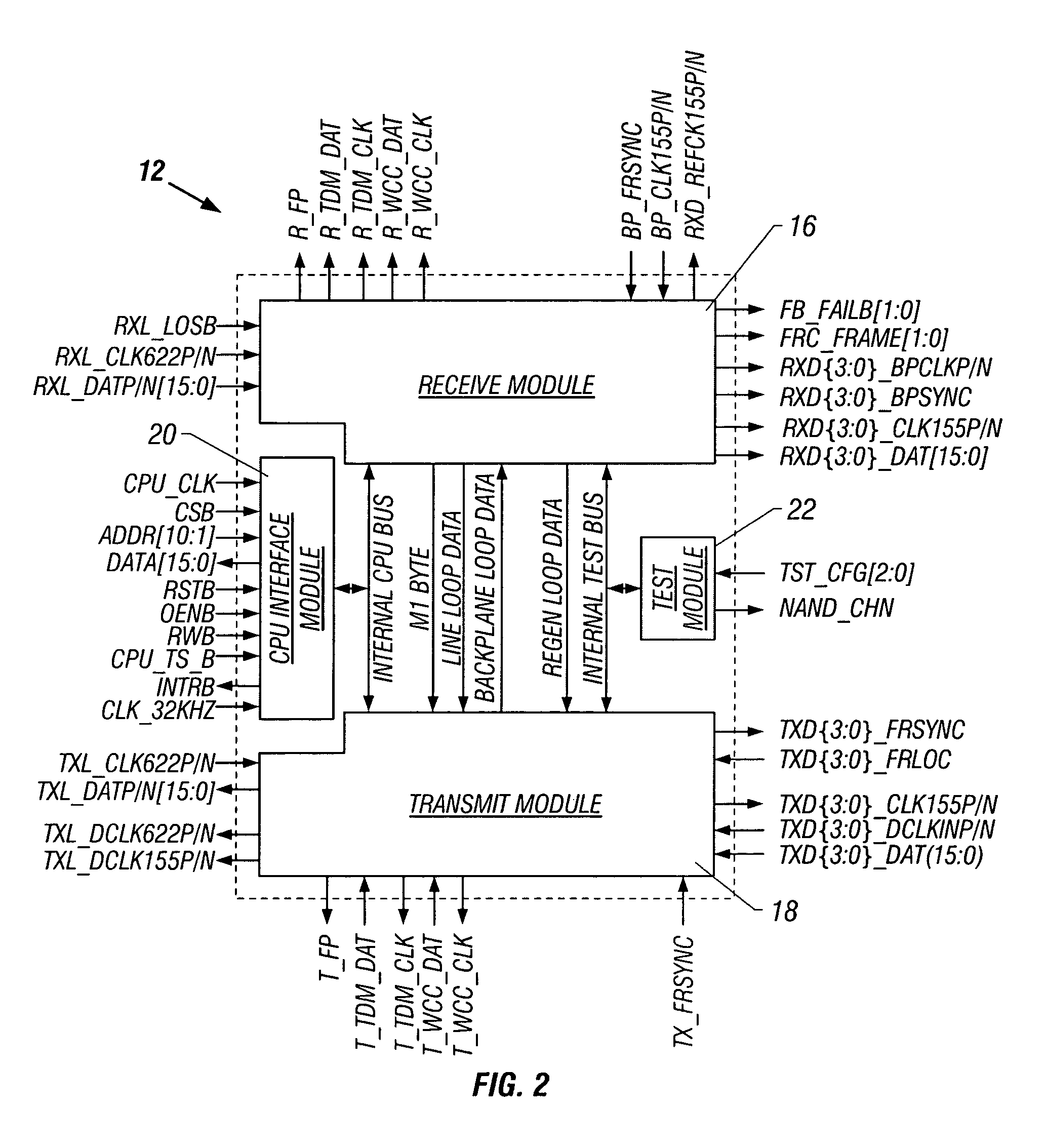BCH forward error correction decoder
a forward error correction and decoding technology, applied in the field can solve the problems of increasing the difficulty of data transmission systems, increasing the reliance on fiber-optic transmission systems, and inability to connect a large number of nodes in a single ring
- Summary
- Abstract
- Description
- Claims
- Application Information
AI Technical Summary
Benefits of technology
Problems solved by technology
Method used
Image
Examples
Embodiment Construction
)
[0046]With reference now to the figures, and in particular with reference to FIG. 1, there is depicted one embodiment 10 of an input / output (I / O) card adapted for use in a SONET OC-192 system, and constructed in accordance with the present invention. I / O card 10 is generally comprised of a front-end OC-192 complementary metal-oxide semiconducting (CMOS) application-specific integrated circuit (ASIC) 12, and four back-end OC-48 processors 14. As explained further below, front-end ASIC 12 allows the processing of an arbitrary OC-192 signal from 192 STS-1 s to a signal OC-192c. Chip 12 interleaves and de-interleaves the four OC-48 signals received from and transmitted to the companion OC-48 processors 14. Chip 12 also provides all SONET section and line overhead termination and generation (excluding pointer processing).
[0047]Front-end ASIC 12 is shown in further detail in the block diagram of FIG. 2, and includes a receive module 16, a transmit module 18, a CPU interface module 20, an...
PUM
 Login to View More
Login to View More Abstract
Description
Claims
Application Information
 Login to View More
Login to View More - R&D
- Intellectual Property
- Life Sciences
- Materials
- Tech Scout
- Unparalleled Data Quality
- Higher Quality Content
- 60% Fewer Hallucinations
Browse by: Latest US Patents, China's latest patents, Technical Efficacy Thesaurus, Application Domain, Technology Topic, Popular Technical Reports.
© 2025 PatSnap. All rights reserved.Legal|Privacy policy|Modern Slavery Act Transparency Statement|Sitemap|About US| Contact US: help@patsnap.com



